Welcome to one of the most active flamenco sites on the Internet. Guests can read most posts but if you want to participate click here to register.
This site is dedicated to the memory of Paco de Lucía, Ron Mitchell, Guy Williams, Linda Elvira, Philip John Lee, Craig Eros, Ben Woods, David Serva and Tom Blackshear who went ahead of us.
We receive 12,200 visitors a month from 200 countries and 1.7 million page impressions a year. To advertise on this site please contact us.
|

|
|
RE: Which scales?
|
You are logged in as Guest
|
|
Users viewing this topic: none
|
|
Login  | |
|

   
mark indigo
Posts: 3625
Joined: Dec. 5 2007

|
 RE: Which scales? (in reply to devilhand) RE: Which scales? (in reply to devilhand)
|
|
|
quote:
I'm ready to swap some good flamenco materials. I need all 3 Volumes of your Claude Worms book. I have Manuel Granado's Metodo Visual de la Guitarra Flamenca DVD 1-3. Interested?
Sorry, I don't have time or patience to scan one volume let alone all three. I have a lot of books and DVD's (and CD's), and if I want something I usually try to buy a hard copy. Partly because I am an old relic that likes physical objects and partly because I want to support the artists and authors that create this stuff.
I can let you know though, that in terms of theory it's pretty much all there on the page and a half scan. It repeats in the next section for A Phrygian/por medio, and again in subsequent sections for other tonos; B/por Granaína, F#/por Taranto, C#, G#, D# and also D etc.
Most of the content of each section is examples of falsetas or sections of falsetas which he applies his analysis to, grouped under headings according to harmonic type.
To be honest I haven't used it much as I'm not a great reader and that's not the way I choose material to work on, also the "audio" that comes with the books is download midi which is horrible!
_____________________________
|
|
|
|
REPORT THIS POST AS INAPPROPRIATE |
Date Dec. 1 2019 17:05:14
 |
|

   
mark indigo
Posts: 3625
Joined: Dec. 5 2007

|
 RE: Which scales? (in reply to mark indigo) RE: Which scales? (in reply to mark indigo)
|
|
|
quote:
Nonetheless, where are the references to Phrygian key please? I mean real ones, not arguments. I can't find ANY information describing it, beyond its assertion as valid. Where is the wealth of commonly held theory? I'm up for being persuaded. The simplicity of the harmony I hear in old flamenco is just too fantastic and it must tie together somehow.
from Norman Kliman's site http://canteytoque.es/ the section on "Classification and study of siguiriyas and soleá." This is the Solea, the Siguiriya is identical, but contains the word "Siguiriyas" instead of "Solea"
"Scale degrees
Flamenco guitarists use capos to adjust the key of the music to the singer's preference. This makes it difficult to compare different recordings of a single style because the recordings are likely to be in different keys. For purposes of analysis, we can use the Phrygian mode to represent the melodies of soleá styles in order to generically refer to each note of the melody as a degree, regardless of the corresponding key. The diagram below represents standard notation and guitar tablature for A and E Phrygian scales. The first note (also called tonic) would be the first degree, the second note would be the second degree, etc. The eighth note would be the first degree once again because it is the same note in a higher register (this is why they are called octaves). Using this same system, Roman numerals are used in reference to chords. For example, in A Phrygian, IV minor (IVm) would be D minor because D is the fourth degree."
_____________________________
|
|
|
|
REPORT THIS POST AS INAPPROPRIATE |
Date Dec. 1 2019 18:16:17
 |
|

   
Ricardo
Posts: 14801
Joined: Dec. 14 2004
From: Washington DC

|
 RE: Which scales? (in reply to mark indigo) RE: Which scales? (in reply to mark indigo)
|
|
|
Line by line? Ok, well, you guys asked for it! 
“Flamenco E (por Arriba) Mode”....
I have stated numerous times that using the term “mode” to describe what he is trying to describe is not the smartest thing to do as it leads to confusion regarding what mode might mean. Most of us that know flamenco, know exactly what he is referring to, not to be confused with Alegrias or Farruca in E minor, I would suspect he is using “mode” to distinguish the key. For example, to keep consistent I would hope he would describe Alegrias as “major mode” or Farruca as “minor mode”, so that Solea would be the “flamenco mode”. In this regard we can simply replace the word “mode” with “KEY” for any and all situations that involve flamenco. THat way we can reserve the correct term usage for “mode”, in context of when we might need it, referring to a specific scale application. I know that with “Key” people think only “do re mi” or “A B C”, but it can refer to both at once “Flamenco KEY of A”, or “Key of A Flamenco”, for example.
“The flamenco mode is identical to the E mode (Dorian Greek Yada yada, or descending Phrygian yada yada) but has an unstable third (major or minor) [spells the scale in reverse order, as per Greeks], most striking feature is the semitone between first two degrees E-F....”
Ok I paraphrased because this is an extremely frustrating blurb that jumps all over the place. First of all, it’s not “identical”, we can say it “at times resembles”. Greeks used a different tuning system than the guitar does. But ignoring that, this business of trying to relate to ancient Greeks vs European Western Baroque say, and forcing a descending vs ascending concept of describing a simple scale, overly complicates a non musical related issue. When describing the way the music is functioning we don’t need to get into the evolution of all music since the beginning of man and how we arrived at the present day picado. So complicating terminology that has changed over time historically (Doric vs phrygian etc, the names are arbitrary) is not helpful and should be left, at most, as some footnote somewhere.
Ok so next the “unstable third”, already flying in the face of “identical” to the Greek mode, so what’s up with that? Anybody that might have already encountered music in the key of A minor, probably has noticed the issue of the G being raised for the sake of the Dominant chord “E major”, and the issue with the flamenco mode here is no different. “Unstable” therefore, is a poor word choice, implying perhaps something like what happens in blues. This fact needs to be pointed out immediately so that someone that understands this concept already (how and why the G changes in A minor key) can relate better, and not think the author is describing some other bizarre exotic thing related to Ancient Greece, medieval times, or other! (Indeed, I think it’s why folks go on about a nonsense 8 note scale, but never do that for basic minor key songs!) 
Last the E-F “THE MOST striking” thing...it’s a subjective personal opinion that this one interval is the thing. Because Locrian and Super locrian, mode 2 of melodic minor, mode 5 harmonic major, etc, has the same “striking” interval, so how the hell could a student tell the modes apart if that is ALL that was so important? I guess I would point out that E-F and C-B above or below those allow for parallel 5ths/4ths to move TOGETHER by half step, and THIS fact might be a striking characteristic of the mode.
“ relative major and minor modes, C major and A minor.....secondary dominants suggest brief modulations....”.
Ok, this info is good however we need to first establish the TONAL system called “phrygian key” that could POSSIBLY allow for such a thing to occur...which he tries to do next incorrectly. Otherwise, a knowledgeable classical theory guy will read that and be like “huh? How can you go V-I in Major and it’s a secondary dominant??? Makes zero sense”. Again he is assuming that these things are already common knowledge that simply follows from the logic of any music theory system. On the surface it sounds as if the guy just doesn’t know he is in A minor.
Next he uses all capital letters to spell out the natural phrygian chord scale, except for the I chord which he describes as E major triad, using basic triads except for v which he writes out as the only 7th chord (m7b5, jazz guitar speak for half diminished). He justified the I chord as a footnote which points out, again, his “unstable third”. I am ok with the footnote, but the Roman numerals need to reflect chord quality...i or I, II, III, iv, vdim, VI, vii....and if you use 7ths for one chord, might as well include them for each chord because you are trying here to distinguish this chord scale from the ones that are used for harmonic analysis of normal western major or minor key tonal pieces. He is a doing a poor job of convincing someone that “flamenco mode” is somehow NOT the basic A minor key and he is simply in error at describing the chord scale.
The “cadence” issue I addressed earlier. The convolution of andalusian “cadence” and the other “II-I” cadence, and the half cadence “I-II”...so it’s confusing a simple issue. The footnote gets at the reason for this confusion...the throwback once again to Ancient Greek tetra chords and it’s superficial resemblance to the “andalusian cadence” descending chord sequence...is it minor is it phrygian? What is it? Oh its Greek THAT’S it!!! Whatever sorry, NO it’s a non issue and we don’t need to justify “II-I” as a legitimate cadence by looking back at GREEK MODAL MUSIC, which was not harmonic anyway, it was freaking modal and never NEEDED to cadence.
So he was on the right track there with II-I terminal value, but didn’t justify it with II7-I, the true equivalent of the V7-I he tried to compare it to.
Next the “extensions” of the chords....talking 7ths and 9ths and such, at first he is describing in jazz fashion the types of chord voicing one would use in this “flamenco mode”. It looks exactly like the way one would teach setting up the chords of a “Modal vamp”...again possibly giving the wrong impression that flamenco is just vamping on a single modal scale. He further convoluted terminology as he names chords such as “F(b5)”, or “E(#5)”, which translate just fine for jazzers, but could confuse students with more classical background, or simply get the fact that the chords are in one key and therefore misspelled. Later there is a miss use of “sus4” for the Fmaj7#11....those two concepts are not interchangeable. First of all, “sus” implies the third is omitted in the voicing which I doubt he was specifically implying. Also jazz chords are spelled from major or Ionian base, so 4 can’t be implied to be # all of a sudden because of our new “flamenco mode” chord scale. “Sus#4” at LEAST would make some sense, but trapped in this limbo between jazz chord chart language and classical theory I feel it’s sort of expected of guitar students to not care much about mixing and matching terminology for any type of music.
His end note there “whatever the extension...” I certainly hope he only meant the ones he shows above it, the modal vamp type, because there are some more that actually WILL take you or “lead to subsequent development”. In other words, an F7, F9, or F13, (as opposed to the Fmaj7#11) might take us not only to the terminal “E” tonic, but also can lead us to Bb major....a type of modulation, though not super common in the tradition, is totally “allowed” and used at times. We already discussed how the E7 can also be viewed as the preparatory “V” going to A minor....and in flamenco “mode” context is viewed as a secondary dominant move, NOT as a modulation to the relative minor, in most cases. In cante accompaniment this is emphasized by using the inversion E7/G# for example.
_____________________________
CD's and transcriptions available here:
www.ricardomarlow.com
|
|
|
|
REPORT THIS POST AS INAPPROPRIATE |
Date Dec. 1 2019 21:58:29
 |
|

   
Ricardo
Posts: 14801
Joined: Dec. 14 2004
From: Washington DC

|
 RE: Which scales? (in reply to El Burdo) RE: Which scales? (in reply to El Burdo)
|
|
|
quote:
'Of these, only (major and minor) are usually considered and are actually (though not quite logically) distinguished as different keys, thus leading to a total number of 24 keys'.
That's interesting for all you absolutists out there, 'not quite logically'.
Glad you started reading. Not sure who interjected with the “not quite logically”, but I would say for Ionian to take on the Important role ahead of all the other modes, sure there was a lot of logic behind it. It boils down to the V7 chord of that chord scale, the concept of tension and release. I won’t justify it myself but I’m sure you can read up on the deep answer there.
For Aeolian I tend to agree there is some busted logic on how they made that work as a “key”, however the good news is it opened the door for other modes to get the tonal treatment. In general it is not so convincing when they try more than vamping with other modes, however, I pointed out along the way we ended up with both Blues and Flamenco as examples of success regarding creating a tonal system of non Ionian or aeolian modes. Perhaps not incidental is both styles of music are “Form” based. Bach was inspired by Fischer to make his well tempered clavier which explores all major and minor keys...Fischer had an E phrygian prelude and fugue....Bach thought the idea was rubbish obviously and only carried on work in the two keys. Blues and flamenco came WAY later.
quote:
'In any key, a large number of modes are possible'. So, why not 8 tones?
First of all, I’m hoping you realize the term “mode” is not good for describing a flamenco form. Solea can make great use of several modes (scales as per your definition), which it does, but doesn’t need to change keys to do it.
But there is your question, why not 8? The answer actually is framed in a better question. Why do all music systems on earth use 7 note names instead of more? Why only do re mi fa sol La Si do? Why sa re ga ma pa dha ni? Why not an 8 note scale called Abcdefgh? Even systems that use more than 20 some notes to an octave? There is a good answer for this too and it has to do with logic, math, and nature. Look it up.
_____________________________
CD's and transcriptions available here:
www.ricardomarlow.com
|
|
|
|
REPORT THIS POST AS INAPPROPRIATE |
Date Dec. 2 2019 14:31:05
 |
|

  
Piwin
Posts: 3559
Joined: Feb. 9 2016

|
 RE: Which scales? (in reply to El Burdo) RE: Which scales? (in reply to El Burdo)
|
|
|
quote:
a repertory of traditional melodies, melodic formulas, stereotyped figures, tonal progressions, ornamentations, rhythmic patterns
Even if we were to apply this definition of modes to flamenco, we still wouldn't get any such thing as a single "flamenco mode", no? Rather, there would be "solea mode", "fandango mode", "tangos mode", etc. since all the palos that make use of flamenco phrygian don't necessarily share the same traditional melodies, melodic formulas, seterotyped figures, etc. With that definition of modes aren't we really just talking about palos?
_____________________________
"Anything you do can be fixed. What you cannot fix is the perfection of a blank page. What you cannot fix is that pristine, unsullied whiteness of a screen or a page with nothing on it—because there’s nothing there to fix."
|
|
|
|
REPORT THIS POST AS INAPPROPRIATE |
Date Dec. 2 2019 16:51:19
 |
|

   
mark indigo
Posts: 3625
Joined: Dec. 5 2007

|
 RE: Which scales? (in reply to Ricardo) RE: Which scales? (in reply to Ricardo)
|
|
|
quote:
using the term “mode” to describe what he is trying to describe is not the smartest thing to do as it leads to confusion regarding what mode might mean.
re ongoing discussion of the meaning of the word, I checked the Oxford Dictionary of Music for "mode" and it begins:
"modes.
(1) Names for each of the ways of ordering a scale, i.e. major mode and minor mode.
(2) The scales which dominated European mus. for 1,100 years (approx. AD 400 to AD 1500) and strongly influenced composers for another hundred years (u to c.1600). They have since reappeared from time to time in the work of some composers, especially in the 20th cent. Throughout that total period of 1,500 years the plainsong of the Church, which is entirely 'modal'. has continued to accustom the ears of fresh generations to the melodic effect of the modes. But the description 'church modes' or 'ecclesiastical modes' is wrong, since their use was general."
It then continues with ref to Pythagoras and Greeks, Pope Gregory, Henry of Glarus, authentic and plagal etc. etc.
_____________________________
|
|
|
|
REPORT THIS POST AS INAPPROPRIATE |
Date Dec. 2 2019 17:17:43
 |
|

   
kitarist
Posts: 1715
Joined: Dec. 4 2012

|
 RE: Which scales? (in reply to El Burdo) RE: Which scales? (in reply to El Burdo)
|
|
|
quote:
According to Harvard
You keep saying that as if it matters in this context. Is "Harvard" known for its excellence in flamenco studies? (no). Not only is this a fallacy argument from (wrong) authority, it is more generally wrong because dictionaries describe how language is (was) used (they are reactive) rather than prescribe it. And they are frequently wrong, especially for specialized terminology.
Just wanted to make this comment before we completely descend into dictionary definition wars.
Examples:
"Harvard" - "..a choice of modality, i.e. of certain alterations of the tones that form the scale" - What? This is wrong. And why use "alterations" when they really mean same tones - but re-arranged - the way typically the modes are presented as cyclical permutations of the A B C D E F G tones.
"Harvard" - "A mode is generally held to be a selection of tones 'arranged in a scale' that form the basic tonal substance of a composition." This is wrong as well. A mode contains notes that can be arranged as a scale, sure, but it involved various rules about starting, sequencing, ending, interval jumps of the melodies. A mode was not just a scale, or else we would just call it a scale. Whoever wrote this seems confused. They sort of get at this as 'melody types'.
Also, historically a mode was a purely melodic sequence; no harmony, or at most a drone type stuck on the same pitch. The other extended or more contemporary use for mode in a harmony context seems to be as 'mood' - sort of staying in the same place or going around in tight circles with a few chord changes - I think this is what Ricardo calls a modal vamp. Flamenco's essence musically is neither of those things so it makes no sense to call it modal music. It is obviously tonal with a key centre, it is just that the key is not based on a major or minor scale, but on a modified phrygian one - call it A flamenco or E flamenco key. There are harmonic progressions and modulation to other keys before returning to its key centre.
_____________________________
Konstantin
|
|
|
|
REPORT THIS POST AS INAPPROPRIATE |
Date Dec. 2 2019 19:54:43
 |
|

   
kitarist
Posts: 1715
Joined: Dec. 4 2012

|
 RE: Which scales? (in reply to Piwin) RE: Which scales? (in reply to Piwin)
|
|
|
quote:
It seems to me that relating it to Greek modes isn't really about music theory per se
I think you are probably right.
BTW for reference, here is the correspondence between old Greek tonos and medieval church modes, with their intervals and start notes, and 'finalis' - the last note of the melody, for church modes only.
The ones where the start note and the finalis are the same are 'authentic'; the other ones where the finalis is a fourth above, are 'plagal' - named hypo-. Also, odd that the ones we love today only appeared as modes in the 16th century, added by Swiss theorist Glareanus (aeolian and ionian; and the hypo versions).
This is from a handy book on music called "Music: A Mathematical Offering" by David Benson. Below the table he also makes an interesting claim - that the Ionian mode ascended to its role because its three major chords - the I, IV and V - 'are best situated for use in harmony'. Not sure I buy it - best for what - the common practice with tension resolution progression - but that is due to the ST interval arrangement, so this is circular reasoning, isn't it? It is like saying, in flamenco, that modified phrygian scale became the basis because II - I worked particularly well as a harmonic tension-resolution.
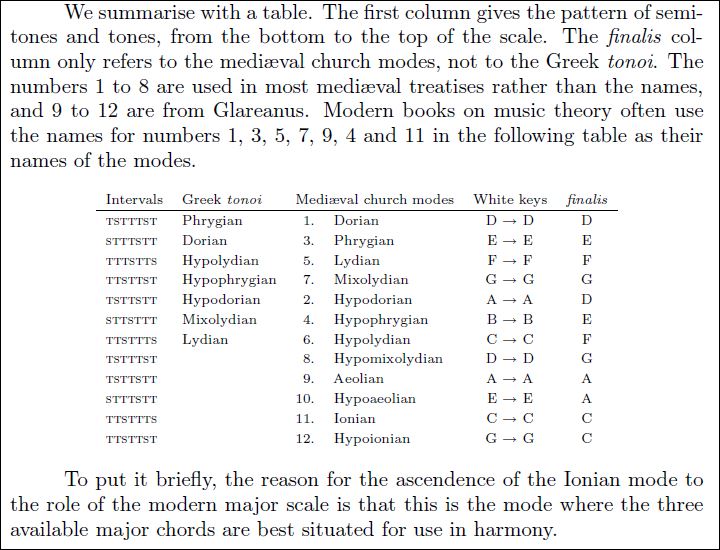
Images are resized automatically to a maximum width of 800px
 Attachment (1) Attachment (1)
_____________________________
Konstantin
|
|
|
|
REPORT THIS POST AS INAPPROPRIATE |
Date Dec. 2 2019 21:28:32
 |
|

   
Ricardo
Posts: 14801
Joined: Dec. 14 2004
From: Washington DC

|
 RE: Which scales? (in reply to kitarist) RE: Which scales? (in reply to kitarist)
|
|
|
quote:
Below the table he also makes an interesting claim - that the Ionian mode ascended to its role because its three major chords - the I, IV and V - 'are best situated for use in harmony'. Not sure I buy it - best for what - the common practice with tension resolution progression - but that is due to the ST interval arrangement, so this is circular reasoning, isn't it? It is like saying, in flamenco, that modified phrygian scale became the basis because II - I worked particularly well as a harmonic tension-resolution.
But the II-I logic AND the V-I logic ARE INFACT the reason those modes work and say lydian DOESNT, for a Key where you are gonna venture away from tonic. Lydian simply functions better as a IV chord concept.... or a II chord concept.... or a VI chord for minor. As an attempted I chord and basis of a tonal system, it doesn’t pull.... it’s a half cadence vibe, same like mixolydian. It’s not just cuz we are used to major keys either, there is math behind this. I’m sure tons of experimenting was done and for what BACH had in mind, only major worked. Aeolian is altered as is our beloved Phrygian in order to do what only Ionian can naturally do.
Math of music is simple...3:2 is the basis, it’s inherently part of nature of sound. 5th intervals. Ionian has nice 5th above and below to base its harmony on. It’s the king, the winner of nature’s game of 5ths.
_____________________________
CD's and transcriptions available here:
www.ricardomarlow.com
|
|
|
|
REPORT THIS POST AS INAPPROPRIATE |
Date Dec. 2 2019 23:58:59
 |
|

  
Beni2
Posts: 139
Joined: Apr. 23 2018

|
 RE: Which scales? (in reply to kitarist) RE: Which scales? (in reply to kitarist)
|
|
|
quote:
quote:
In this regard we can simply replace the word “mode” with “KEY” for any and all situations that involve flamenco.
Let's. Even beyond flamenco, in classical, most of these explanations invoking a mode actually are really [meant to be] referring just to the scale, i.e. to the particular arrangement of semitone and tone intervals from low to high pitch, and not to any modal rules for melody.
In flamenco a falseta that emphasizes II on beats one through nine and resolves to I on beat ten implies "key." However, mode in traditional flamenco would be an implied phrygian or lydian depending numerous factors (i.e. is there a bass note, do arpeggios imply harmony, etc).
Within the flamenco phrygian tonal system [Nunez; Castro Buendia] that II-I in more modern flamenco can be fleshed out with "modes" of which d melodic minor [d-e-f-g-a-b-c#-d] or lydian augmented [f-g-a-b-c#-d-e-f] are common. Examples include Riqueni and Paco, but the point is that mode does not = key.
Kitarist, I cited Harold Powers in one of my other posts. He has written extensively on the gradience between modal and tonal practices. For him, modality and tonality exist on dfferent planes but modality can be used in tonal contexts. Also, there are a great number of things for which a four-semester theory track cannot account for. One is chromatic third relations. Anyway, I don't have time now. Super busy at work this time of year. I will share the Riqueni and other examples if you are interested and I have time.
|
|
|
|
REPORT THIS POST AS INAPPROPRIATE |
Date Dec. 3 2019 21:23:13
 |
|

   
Ricardo
Posts: 14801
Joined: Dec. 14 2004
From: Washington DC

|
 RE: Which scales? (in reply to kitarist) RE: Which scales? (in reply to kitarist)
|
|
|
quote:
with II-I tension-resolution to have become the most widely used key type?. If the answer is no, this implies that there is something special about V-I in major which is additional to the qualities shared with II-I in flamenco, i.e. additional to the semitone resolving movements within the chords. If so, what is that additional quality of V-I which applies to major but not, for II-I, to flamenco key?
This requires going into the physics I didn’t really want to. Define alternate universe. Does it contain the same physics as this one? Does it include beings that were fine with modal only music for generations, perhaps 1000’s of years before deciding it was time to fudge the 3:2 perfect 5ths of nature in order to close a nice neat circle of only 12 tones? If the answer is YES to all that, then, the answer would probably be NO to phrygian taking command over ALL the music systems under their equivalent equal tempered system, unless for some bizarro religious reason or something “thou shalt always play the phrygian cadence in music”.... I could see phrygian picking up IN ADDITION to Ionian and Aeolian....something like the Alien “Bach” might have had 36 preludes and fugues instead of 24. But Ionian would always reign as “king”. Here is why maybe.
To make your musical system you start by picking a note and exploiting or “stacking” up your 3:2 perfect 5ths. Let’s start with F for argument sake. FCGDAEBF#C#G#D#A#E#B#”F”....You end up with the Chromatic scale of 12, though the 13th note you will notice is out of tune a little bit. That is why you need to fudge it for equal temperment. Greeks and Indians felt like the out of tune F should actually be included as an option, and so on....you could go to infinity if you wanted, stacking those 5ths. Greeks gave up on 24...Indians didn’t like two of those so 22, Chinese ended up with something like 60(!).
But if we keep it at 12...well we might notice that to make a pleasant musical melody, small numbers work best. 5 for example...pentatonic. Very beautiful pleasant simple stuff. 6 notes not bad either. When we get to 7 notes....uh oh, we encounter a bizarre sound we can’t avoid. The Tritone. There is no way to construct a scale out of the 12 allowed, that has more than 6 notes that doesn’t contain this evil interval. So 7 becames a magic number.
Once you accept this math of 7 you can assign names to these. Stacking 5ths you may notice the first scale produced, (FCGDAEB), is the lovely LYDIAN scale or mode. For me, she is the queen of all music, always watching over her children playing. (Lydian b7 by no coincidence manifests naturally in the overtone series of any single pitch). Sadly Lydian doesn’t work for what Bach and others wanted...a TONAL system that would allow us to morph seamlessly between the other modes available to our 12 tone family. The reason is F can only look for stable 5ths in one direction...B->F is that scary tritone. You can add in an F# (8 note fudge factor to stabilize the B) but now you’ve got TWO evil tritones. So lets look for other notes in the family that might work.
So our next note up the stack, C, just so happens to have all the perfect Goldilocks ingredients. 5th below, harmony is a major triad, 5th above, major triad plus, the added minor 7th makes a special chord that has the tritone tension to resolve away, tonic triad contains the 5th as a nice handle to hold on to while resolving home, etc etc....I am sure some nerds have gone into great depth clarifying why Ionian MUST be the rightful king to Tonal harmony. We can play this game for other modes. They simply don’t work unless we alter them...enter the minor key. Could it work also for Dorian and mixolydian etc? With the alterations yes. But some are more convincing than others.
The reason II7-I works, I laid out already. It stems from the alterations that allow (in E) the V7 (B7) to get substituted because it shares notes in the upper structure that beg resolution (D# and A mainly, in context, and more shared notes depending on voicing). Obviously it’s not so convincing to many folks, but it is to me and Tchaikovsky (he noted it as a sub for the old D#dim7 sub for B for same reasons) at least. I won’t justify the use of the other modes as keys, but it gets done as well with blues, mixolydian, dorian, and rock songs often borrow from this language.
In the end I view most of the best flamenco as a game of thrones where the Queen Lydian reigning for the bulk of it until she finally concedes the throne back to the phrygian king in a beautiful dramatic exchange. In fandango she allows the old Ionian king to pretend he is in charge for a little while before giving it back to the same phrygian king once again. When she plays with any of the other modes, they have no illusions of pretending it’s more than a fling, because the true king she knows quite well.
_____________________________
CD's and transcriptions available here:
www.ricardomarlow.com
|
|
|
|
REPORT THIS POST AS INAPPROPRIATE |
Date Dec. 3 2019 22:26:20
 |
|
 New Messages New Messages |
 No New Messages No New Messages |
 Hot Topic w/ New Messages Hot Topic w/ New Messages |
 Hot Topic w/o New Messages Hot Topic w/o New Messages |
 Locked w/ New Messages Locked w/ New Messages |
 Locked w/o New Messages Locked w/o New Messages |
|
 Post New Thread
Post New Thread
 Reply to Message
Reply to Message
 Post New Poll
Post New Poll
 Submit Vote
Submit Vote
 Delete My Own Post
Delete My Own Post
 Delete My Own Thread
Delete My Own Thread
 Rate Posts
Rate Posts
|
|
|
Forum Software powered by ASP Playground Advanced Edition 2.0.5
Copyright © 2000 - 2003 ASPPlayground.NET |
0.09375 secs.
|


 Printable Version
Printable Version



 ).
). 
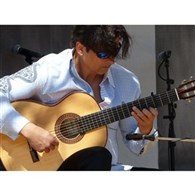



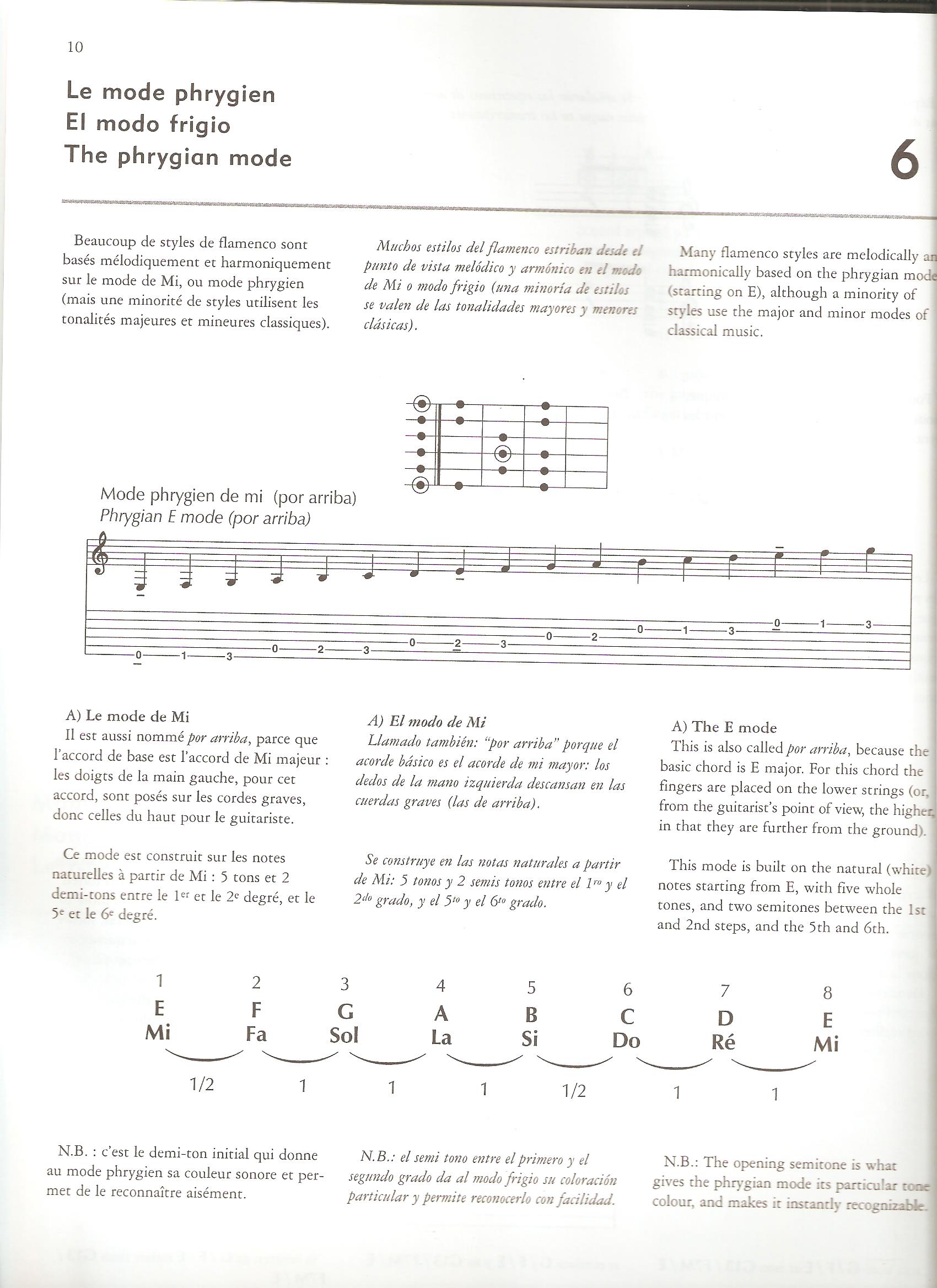

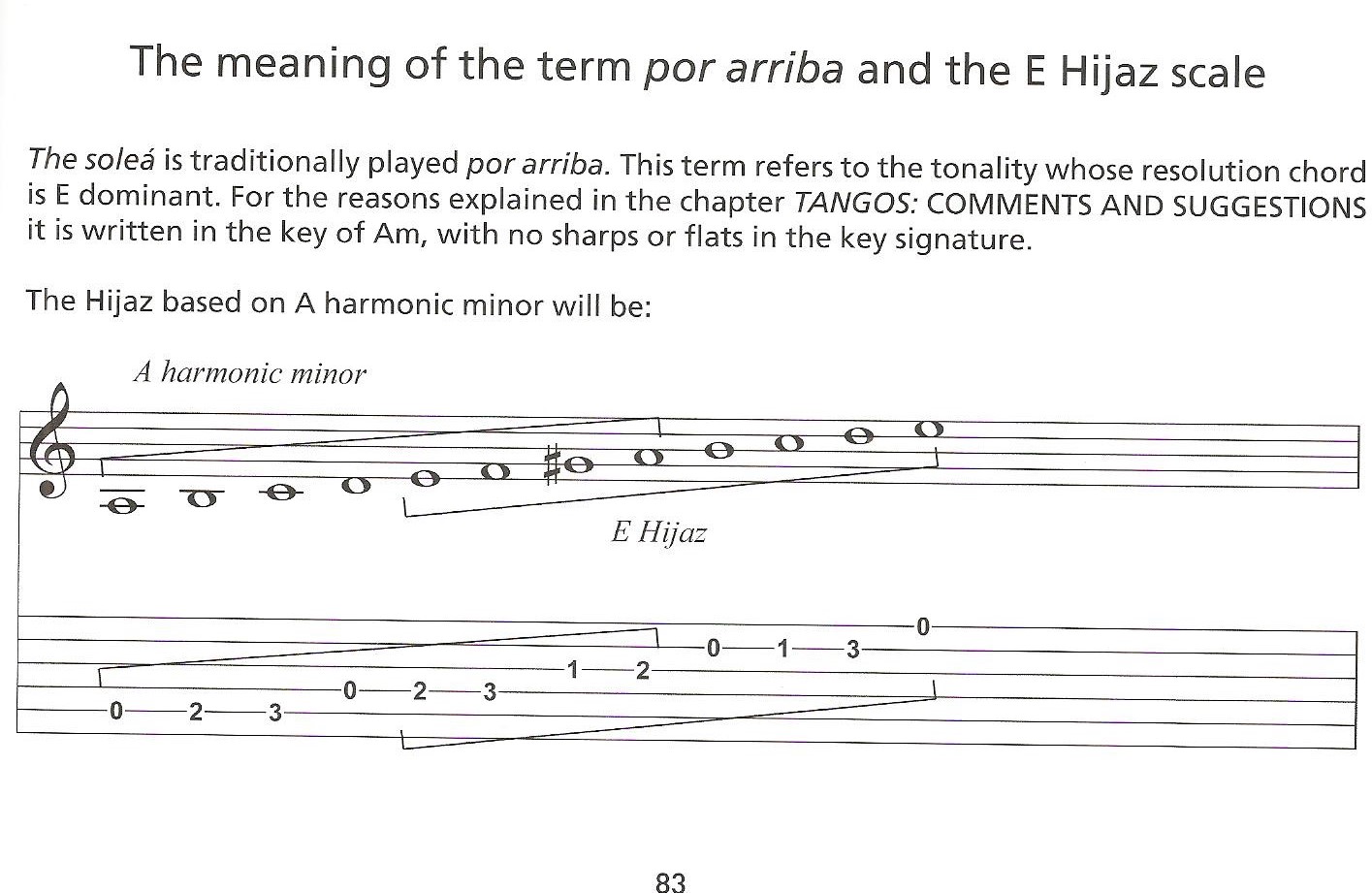
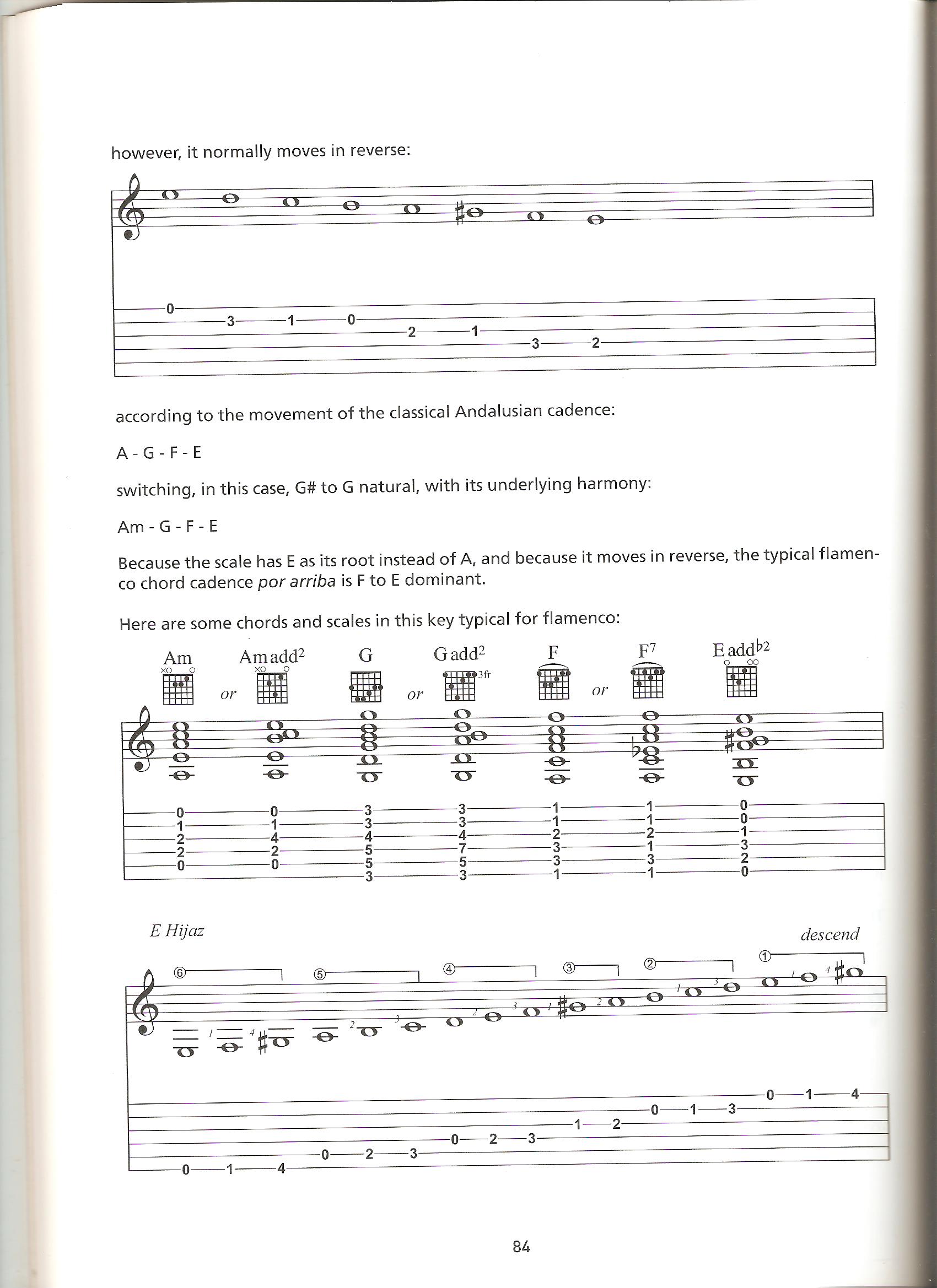
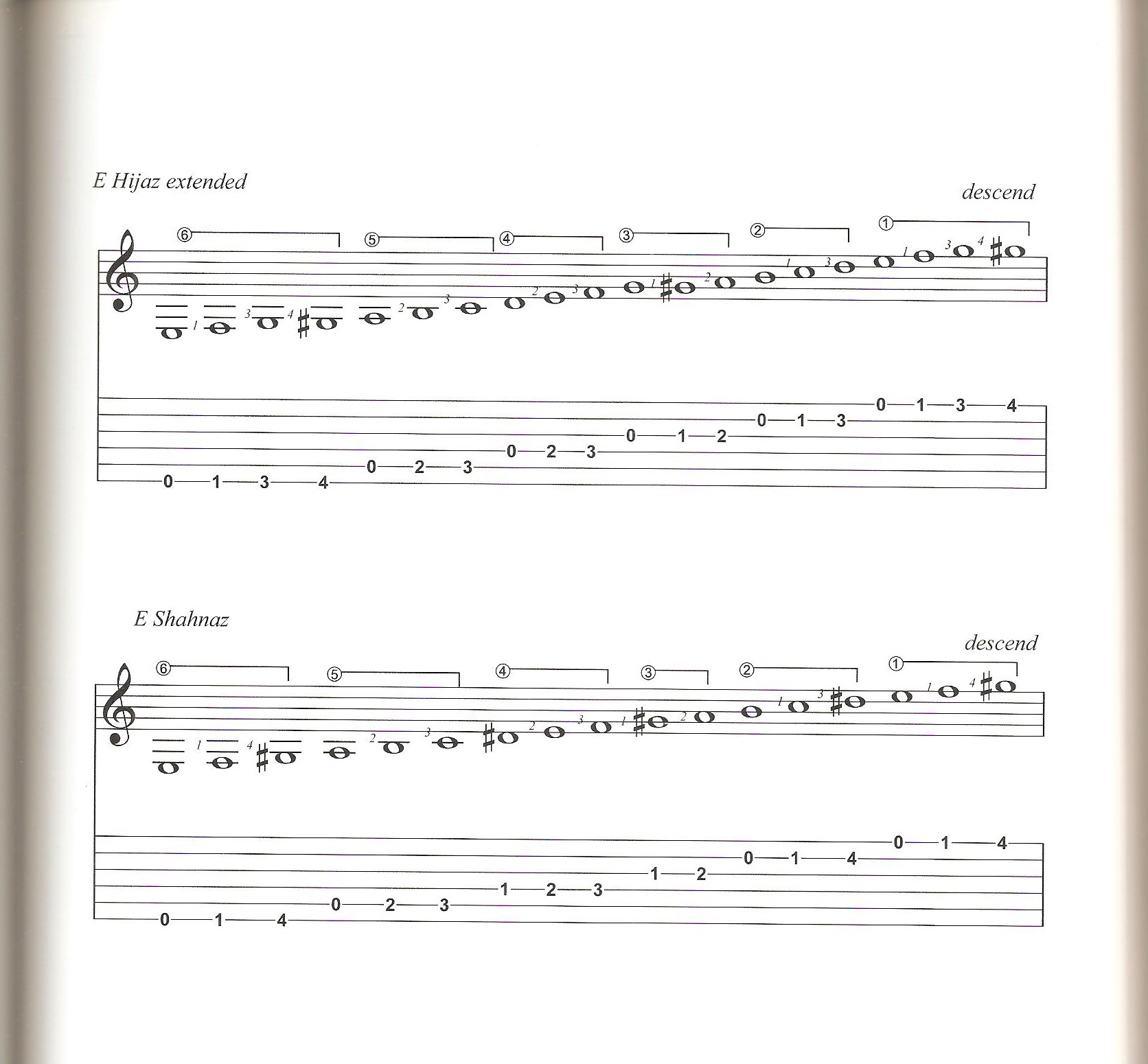

 New Messages
New Messages No New Messages
No New Messages Hot Topic w/ New Messages
Hot Topic w/ New Messages Hot Topic w/o New Messages
Hot Topic w/o New Messages Locked w/ New Messages
Locked w/ New Messages Locked w/o New Messages
Locked w/o New Messages Post New Thread
Post New Thread